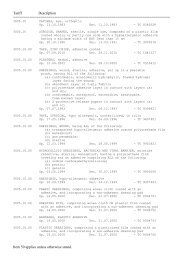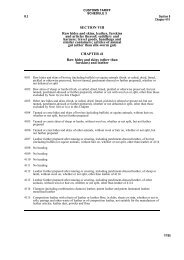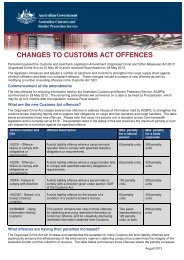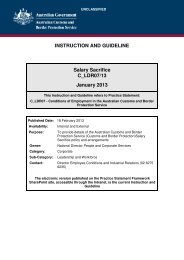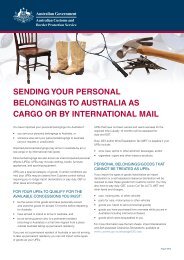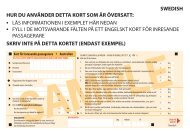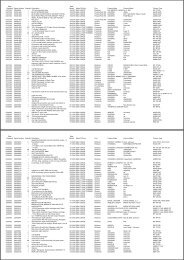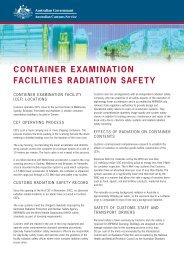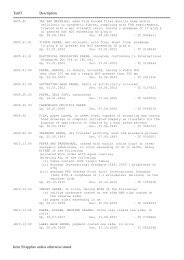SELF ASSESSED CLEARANCE DECLARATIONS - Australian ...
SELF ASSESSED CLEARANCE DECLARATIONS - Australian ...
SELF ASSESSED CLEARANCE DECLARATIONS - Australian ...
Create successful ePaper yourself
Turn your PDF publications into a flip-book with our unique Google optimized e-Paper software.
DIGITAL CERTIFICATES<br />
What is a digital certificate?<br />
A digital certificate should be considered as an electronic signature of either an individual<br />
and/or related entity. The digital certificate exists as a software file and is housed within webbrowsers.<br />
A digital certificate creates a unique identifier that can be checked by the receiver<br />
of information to provide evidence of the sender’s identity and confirm that the document (if<br />
signed) has not been altered or interfered with.<br />
A digital certificate actually contains two separate certificate parts (each with public and<br />
private keys); one for signing (authenticating) and another for encrypting/decrypting electronic<br />
messages.<br />
Who needs a digital certificate?<br />
A digital certificate will be required by any organisation or person in the exporting, importing,<br />
brokering, forwarding, cargo reporting, cargo carrying/handling and related industries who will<br />
communicate directly with Customs electronically.<br />
These include:<br />
• service providers - for example brokerages, cargo reporters, freight forwarders and<br />
bureaus<br />
• exporters, importers, and cargo reporters who communicate directly with Customs<br />
and who do not use service providers to communicate with Customs - if you use a<br />
service provider for some functions (for example to lodge import or export<br />
declarations) but intend to communicate directly with Customs for other functions (for<br />
example to use the diagnostic facility) you will still need to have a digital certificate<br />
• software developers for the purpose of developing software<br />
• Customs Interactive users.<br />
How many digital certificates will be needed?<br />
All direct electronic communicators will need at least one digital certificate. The number of<br />
certificates required by a business will be dependant on the IT setup and the method of<br />
communicating with Customs.<br />
For those businesses that plan to use EDI, the software developers who supplied the EDI<br />
software will be able to provide advice and assistance.<br />
Types of certificates<br />
There are five types of certificates available from certification authorities (CAs) for<br />
communicating with Customs, depending on the nature of the communicator.<br />
Type 1 - grade 2 individual certificates<br />
For users who are operating as an individual, where the digital certificate identifies and<br />
authenticates them personally.<br />
Type 2 - grade 2 non-individual certificates<br />
For organisations without an <strong>Australian</strong> Business Number (ABN), where the digital certificate<br />
identifies the organisation and the individual.<br />
Type ABN-DSC grade 2 certificates<br />
For organisations with an ABN (including sole traders and government agencies). The initial<br />
certificate will be issued to an authorised officer in the organisation. The authorised officer can<br />
then organise for additional certificates to be issued for other individuals within the<br />
organisation. These certificates will then be issued by the CA.<br />
Type 3 (device) certificates<br />
The type 3 (device) certificate will not authenticate human entities. This is a device or serverbased<br />
certificate for organisations whose communications are signed by a server. This will be<br />
of direct relevance to businesses that use EDI to communicate with Customs. To obtain a<br />
type 3 (device) certificate, an applicant must have an ABN and obtain a type ABN-DSC<br />
certificate. The applicant must already have an ABN-DSC certificate in order to apply to the<br />
CA for a type 3 certificate.





